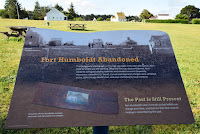This book review and recommendation is on “Hodges’ Scout, A Lost Patrol of the French and Indian War” by Len Travers.

I’m currently teaching history at a court school (juvenile
hall) and my students by and large think that if something didn’t happen in
their lifetime, then it either just doesn’t matter, or in their words it’s “hella
boring.” I try to get them to tune in to history (as an entry point) by just
finding stories that are interesting, exciting, adventurous, or a story that
demonstrates a person’s courage and fortitude. This is one of those stories.
I got turned on to the French and Indian War way back in
high school when one Saturday afternoon my dad and I watched “Northwest Passage” starring Spencer Tracy. That was followed by reading the book by Kenneth Roberts. Then I read “Last of the Mohicans” by James Fenimore Cooper, and the movie with Daniel Day Lewis is still one of my favorites of all time. Fiction
got me excited about the subject, so from there I moved on to books about the
war in general, and a couple of books about Rogers Rangers: “White Devil” by Stephen Brumwell and “War on the Run” by John Ross. Reading “Hodges’ Scout” is
a natural progression and if you also enjoy the movies and books I just mentioned,
then you should read this book.
Here's the setup. You know Fort William Henry, from “Last of
the Mohicans?” Well this event took place in September of 1756, while colonial
troops were building that fort. While under construction, company sized patrols
of around 50 men would venture out to look for signs of approaching French or
Indian forces. One of these patrols, led by Captain Joseph Hodges, met the
enemy and was wiped out. Only three men initially made it back to the fort.
While Hodges and a number of his men were killed and mutilated, a number of the
company were taken prisoner. A few escaped, some were sold to the
French by their Indian captors and then sent home in a prisoner exchange, and
many were held until the end of the war. And finally one soldier decided to
join his captors and eventually paid the price for it.
The title, synopsis, and cover art for “Hodges’ Scout”
grabbed me right away. I enjoyed the author’s voice in the telling of this
story. It is very readable; the details are there but this book does not sound
academic. What impressed me most is the detailed research that Len Travers (a
professor of history at the University of Massachusetts Dartmouth) has
conducted to tell this story. Through official records and period
correspondence, Travers has pieced together what happened to the majority of
the 48 colonial militia soldiers that departed the fort with Hodges. His
section titled “dissecting disaster,” where he supposes scenarios of what
happened during the fight the wiped out Hodges’ company is excellent. You don’t
have to have a background in the French and Indian War to enjoy this book.
Professor Travers fills you in on the strategy of the war and why the fort was
being constructed, how soldiers were recruited, and the events at the
conclusion of the war. Read this book, I think you’ll enjoy it.
One more thing. In the front matter of the book, the author includes
a bible quote:
And some there be, which have no memorial; who are perished, as though they had never been; and are become as though they had never been born…
Ecclesiasticus 44:9
This quote really spoke to me, especially now as we remember
the 75th anniversary of D-day. This is what we need to keep from happening. Our memorial to the unknown soldier is to remember what they have done.














